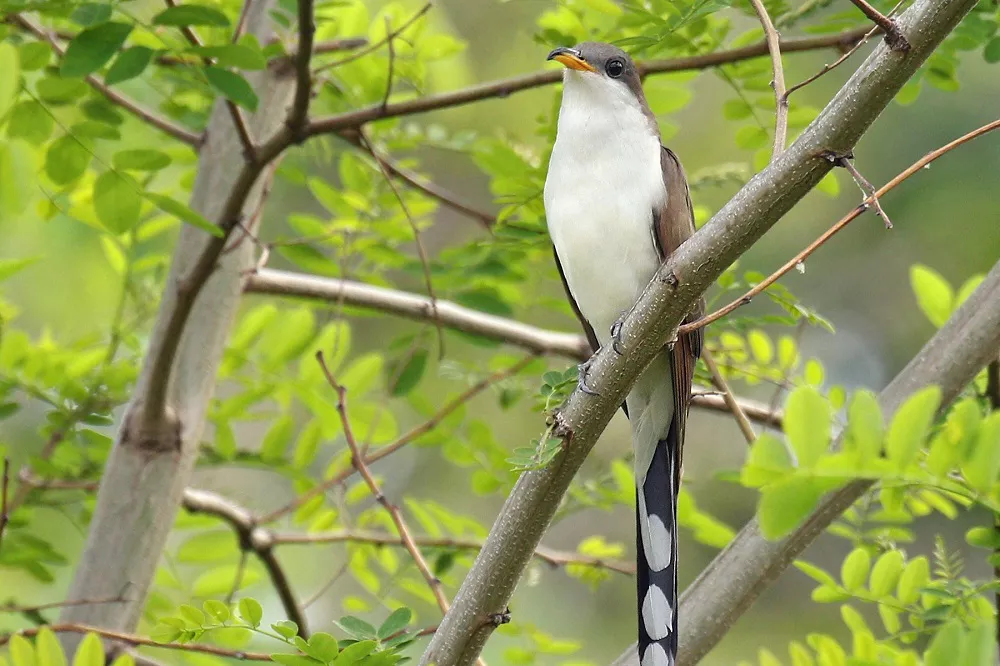The Yellow-billed Cuckoo (Coccyzus americanus) is a fascinating bird species that belongs to the Cuculidae family. These birds are migratory and can be found in North, Central, and South America. Yellow-billed cuckoos are primarily insectivorous, meaning they feed mainly on insects, but they are also known to consume small fruits and seeds. In this article, we will explore in detail the diet of the Yellow-billed Cuckoo.
Insects:
The Yellow-billed Cuckoo feeds primarily on insects such as caterpillars, grasshoppers, cicadas, beetles, ants, wasps, and spiders. They have a preference for larger insects, and their long, curved bills are adapted for catching and eating them. They will often perch motionless on a branch, waiting for an opportunity to grab an insect in mid-air. They are also known to forage on the ground for insects, flipping over leaves and searching for prey.
Fruits and Seeds:
While insects make up the bulk of their diet, Yellow-billed cuckoos are also known to consume small fruits and seeds. They will occasionally eat berries such as blueberries and blackberries, as well as seeds from plants such as poison ivy and oak.
Dietary Changes:
The diet of the Yellow-billed Cuckoo can vary depending on the season and availability of food. During the breeding season, when the demand for protein is higher, they will consume more insects. During the winter months, when insect populations are low, they will rely more heavily on fruits and seeds.
Behavioral Adaptations:
Yellow-billed cuckoos have developed several behavioral adaptations to help them find and capture their prey. They are known to be stealthy hunters and will often remain motionless for extended periods, waiting for an opportunity to strike. Their long, curved bills are also adapted for probing into crevices to find insects, and they can use their wings to create a breeze to flush out hidden prey.
In conclusion, the Yellow-billed Cuckoo is primarily an insectivorous bird, but they will also consume small fruits and seeds. Their diet varies depending on the season and availability of food, and they have developed several behavioral adaptations to help them find and capture their prey. Understanding the dietary habits of the Yellow-billed Cuckoo is important for conservation efforts, as changes in insect populations or habitat loss could have a significant impact on their survival.


 Facebook
Facebook  Instagram
Instagram  Youtube
Youtube 